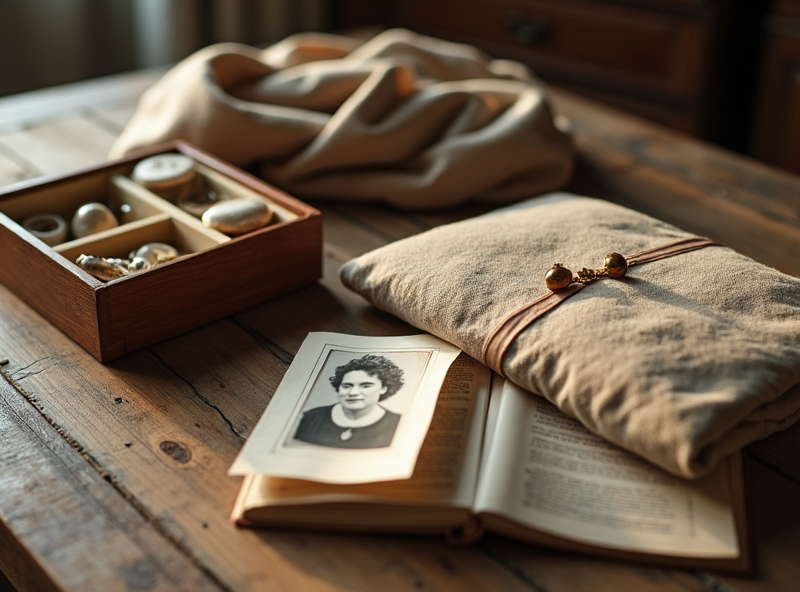Family relics and memories help us connect to our heritage and pay tribute to the people we love. Historical objects are things such as your grandmother’s wedding ring, a photo album, or a family narrative telling our stories. It is important to preserve these relics and stories for future generations.
This article will talk about how to preserve your family’s memories and relics for the future.
Why do we protect legacy and stories?
Family experiences and artifacts define who we are. They respect other views and traditions of our ancestors. Taking care of these items enables the following generations to learn and connect with their heritage.
Do you remember ever holding an old object and wondering about its owner? Do you remember ever coming to realize your family story fits you after listening to one? Managing to preserve these memories enables the following generations to connect.
Preserving Physical Artifacts
Neglect can wear out jewelry, mail, furniture, and pictures. These following techniques are helpful in preserving family history:
Organize artifacts
The life expectancy of an heirloom is the time you care for it. There are various products that require various care.
- Store photos and papers in acid-free boxes or acid-free folders. Don’t use plastic containers; they break down and hold moisture. Keep stuff cool, dry, and out of direct sun.
- Wrapping in soft boxes or cotton bags will prevent any scratches on the jewelry. Place expensive or delicate pieces in a jewelry box with separate compartments. Use gentle air circulation to dry delicate metals to avoid tarnishing.
- Wrap robes and quilts in cotton pillowcases or muslin covers. Avoid plastic because it tends to mildew and retain moisture. Fold the fabric with minimal pressure to prevent wrinkles that might last for eternity.
- Hardwood furniture should be avoided from direct sunlight and very high temperatures as it might cause cracking and fading. Polishing of furniture should be done gently in order to preserve the finish. The items should be kept in a climate-controlled place if possible.

Write a history of the antique
An heirloom is a piece capturing the history of a family, not just an object. To keep the object of significance, record its background. Who owned it? Its importance to their daily existence? List what you know, then, if at all possible, ask older relatives to fill in for you.
To honor the narrative, keep the data with the artifact or digitalize it. You may keep a family history diary with tales about every item or create a quick tag description and affix it to the work.
Turn Display Rotations
Remember that light and air may damage family antiques you are exhibiting. Change items exhibited every few months to reduce damage and wear. Glazed glass with UV filters can protect framed pictures and artworks from damage caused by light.
Preserving Family Histories
As with other artifacts, family stories are precious but easily forgotten if not written and shared. How can family stories be preserved for future generations?
Create oral histories
Oral histories are one of the best ways to preserve your family history. Spend time with the elderly and understand their marriage stories, family traditions, and childhood years. Record them with a smartphone or digital recorder.
Ask “What was life like when you grew up?” or “Tell me about a time that you overcame an obstacle?” Hidden detail sharing and authenticity are encouraged. Digitize and back up these stories to ensure years of preservation.
Family stories to be written
Though many do exist in writings, oral histories really do come handy. In a diary family history, write events, anniversaries, or tales. Encourage relatives to assist with the diary as well, thus creating a group activity.
In important histories, as much as possible give the following: names, dates, and places. This makes it more understandable for future generations who may not be familiar with the history of the story.
Create family trees
By showing that history, a family tree aids in keeping links and stories. Creating a digital family tree by hand using pictures, dates, and comments or online tools is easy.
This makes it easier to connect stories to people and generations. It also helps clarify for the next generations their responsibility within the family.

Relics and Stories to Share with Next Generations
Relics and stories can be shared and kept safe with the next generations. How could we ensure the next generations value them equally as much as you do?
- Share family history as often as possible; it is not something that has to be reserved for holidays. Discuss with your younger relatives and show them the interest you have in finding more and more, especially with your grandchildren and children. More people would love to cherish their relevance if they were to hear these stories.
- Share family heirloom treasures with care. Explain their background and significance. This will connect the recipient to the work and make the meaning of it come out clearly.
- Reflect on digitizing your other documents, photos, and vignettes. To pay honor to memories even in the loss of artifacts, digitize photos, and upload stories to cloud space.
Conclusion
Preserving family treasures and stories is one of the best ways you could honor and continue your family legacy. You can preserve these treasures and then ensure that, with a little care, your subjects treasure them.
You could protect an artifact or collect memories of a family member in order to ensure the legacy of your family continues to live on for generations to come.
